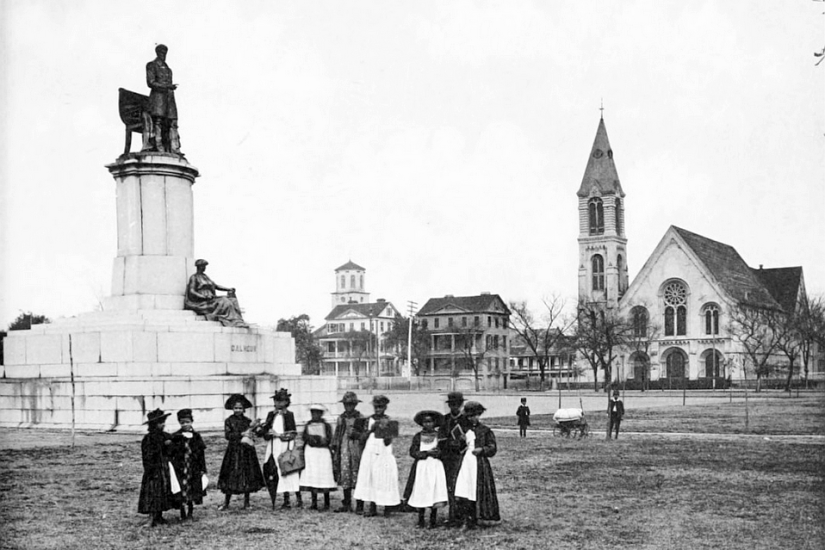In the center of Charleston, South Carolina, in a verdant green space that plays host to farmers markets, festivals, and sunbathing undergraduates, stands a monument of John C. Calhoun, the antebellum South Carolina statesman who famously called Southern slavery “a positive good.” His bronze likeness rises over 100 feet in the air, squaring off against its symbolic rivals, including the copper-shingled steeple of Emanuel A.M.E. Church, where a white supremacist brutally gunned down nine African-American parishioners in 2015.
In one sense, the Calhoun Monument is a remarkably honest, and conspicuous, acknowledgment of Charleston’s dedication to slavery, even after its abolition in 1865. Here in the capital of American slavery—the city where nearly half the enslaved persons brought to the United States first stepped foot on our shores, and where Confederate troops fired the opening shots in a war launched to defend slavery—a group of elite white women worked for decades to honor slavery’s great champion with a statue.
Yet the Calhoun Monument tells another, less visible story, too—one of black resistance to those commitments. The lesser-known history of protest against this statue, and against a similar one it replaced, is as integral to its existence as anything Calhoun and his supporters advocated. For over 100 years, critics of these two Calhoun memorials have waged war against statues they see as the ultimate symbols of white supremacy.
The battle over the Calhoun Monuments is just one front in a larger struggle over how slavery should be remembered in Charleston and across the country. As early as 1865, former slaveholders and their descendants began working to construct a whitewashed memory of the antebellum South, downplaying or even ignoring slavery at times, only to cast it as benevolent and civilizing in other moments. In contrast, formerly enslaved persons, their descendants, and some white allies have worked to preserve an honest, unvarnished account of slavery as the cruel and pervasive institution that it was.
Nothing better encapsulates the whitewashed memory of slavery than the Calhoun Monuments, and nothing better encapsulates the unvarnished memory than the long campaign against them.
In black Charlestonians’ eyes, the Calhoun Monument invoked slavery to justify segregation. “I believe white people were talking to us about Jim Crow through that statue.”
The Ladies’ Calhoun Monument Association actually began its crusade to erect a Calhoun memorial not long after the statesman’s death in 1850. Calhoun’s distinguished political career was certainly a factor in their decision. He had served as a congressman, senator, secretary of war, and vice president over his 40 years of public service. But another reason loomed larger. During his tenure in office, Calhoun had been the white South’s most dogged defender.
